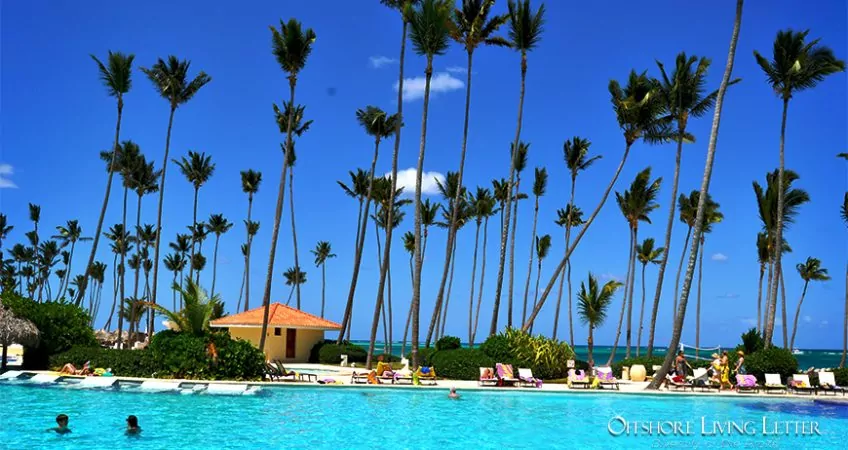
Backup Residency In The DR: Your Post-Election Promised Land
This Backup Residency Is A No–Brainer
The agony of the current U.S. election cycle ends tomorrow.
Next comes the agony of the new administration.
The choices this year are perhaps the worst lesser-of-two-evil options we’ve seen in decades.
So you need other options.
Fortunately, key places around the world are stepping up to oblige.
On my radar specifically right now in the context of more and better options is the Dominican Republic, where I traveled last week to pick up my residency card and cédula.
Now I have another option for where I could live long-term if ever and whenever I decide I need one.
You might wonder about the thinking behind establishing a backup residency. Why not wait until you’re actually ready to make a move to worry about applying for legal residency in another country?
The answer is that you need to act on these opportunities when they’re available.
Residency Rules Change, Sometimes Rather Quickly
In 2008, Panama made wholesale changes to many of that country’s residency-through-investment options. Some of the changes effectively eliminated previous options. All required investment amounts were increased, as were associated processing fees… and it became more difficult in general to qualify.
Anyone who had US$40,000 to invest in a reforestation project in Panama in 2008 and waited until August of that year to submit his application found he was no longer eligible for residency through reforestation… unless he was willing and able to come up with an additional US$40,000. The required investment amount had been doubled.
Not only do costs and requirements to qualify for residency change… but so do restrictions. Sometimes immigration caps are put in place for particular programs, for example.
When a backup residency option is available that fits your parameters… act on it. That way, if and when the day comes that you want to make a move you can hop on a plane with a one-way ticket knowing you won’t be turned away at the border. It’s a secure lifeline that, as long as you maintain the requirements of the residency permit, can’t be taken away.
Right now, as I said, the Dominican Republic has one of your best lifeline options because it’s one of the easiest residency programs on offer anywhere.
The "Fast-Track" Residency
You have three options to qualify for what they refer to as “Fast Track” residency:
- You can qualify as a retiree with US$1,500 or more per month in Social Security or other pension income…
- Retired or not you can qualify by showing US$2,000 or more per month in income from any source (rental income, dividends, and/or interest income works)…
- Or you can invest US$200,000 in one of several investment options (real estate qualifies as does a certificate of deposit).
If you don’t qualify under one of those options, you’re not out of luck. You can still apply and be approved for residency. It just won’t be under the Fast Track program.
One benefit of qualifying for Fast Track residency is that you are then eligible for fast-tracked citizenship. Generally speaking, you are eligible for naturalization in the Dominican Republic after three years of residency. However, as a Fast Track resident, you can start the naturalization process after only six months.
The naturalization process itself takes up to a year.
Of course, it wouldn’t make sense to apply for residency in a country where you wouldn’t want to spend time. Not a problem in this case. The DR has plenty to recommend it…
This island nation boasts 800 miles of coastline plus a mountainous interior where temperatures are cooler. The north coast has been developed with resorts and expat communities… in Sosúa and Cabarete, for example. On the Samaná Peninsula is the quirky, charming, quintessentially Caribbean beach town of Las Terrenas. On the south coast is capital city Santo Domingo, as well as Juan Dolio, La Romana, and Punta Cana… all appealing lifestyle choices.
In the interior of the country is Santiago, the second biggest city in the DR after the capital, surrounded by plenty of viable rural living options.
Amazing restaurants can be found almost anywhere in the country, even in seemingly very remote locations. This trip Kathleen and I stumbled upon a small unassuming place on the north coast near Puerto Plata where we had an excellent Mexican dinner for less than US$10 per person. A restaurant in the center of Santiago could stand up against restaurants in any major U.S. city.
The biggest downside to spending time in the Dominican Republic is that, despite having the fastest-growing economy in the Caribbean for the last few years, poverty is a problem… meaning crime can be a problem. Generally speaking, the country is safe, but you wouldn’t want to wander around some zones wearing a fancy watch or a big diamond.
Economic growth is being driven by tourism, primarily, and agriculture.
Farm research was my secondary business agenda during my visit last week. One of the biggest advantages this country has on this score is that export markets are not limited to the United States. The United States buys about 45% of all exports from the Dominican Republic, and the country is working to expand its markets in the EU, China, and elsewhere.
I intend to make an agricultural investment in this country in 2017. The research for where and what to buy specifically will take some time.
Meantime, the choice to invest in a backup residency in this country was a no-brainer.
Lief Simon



